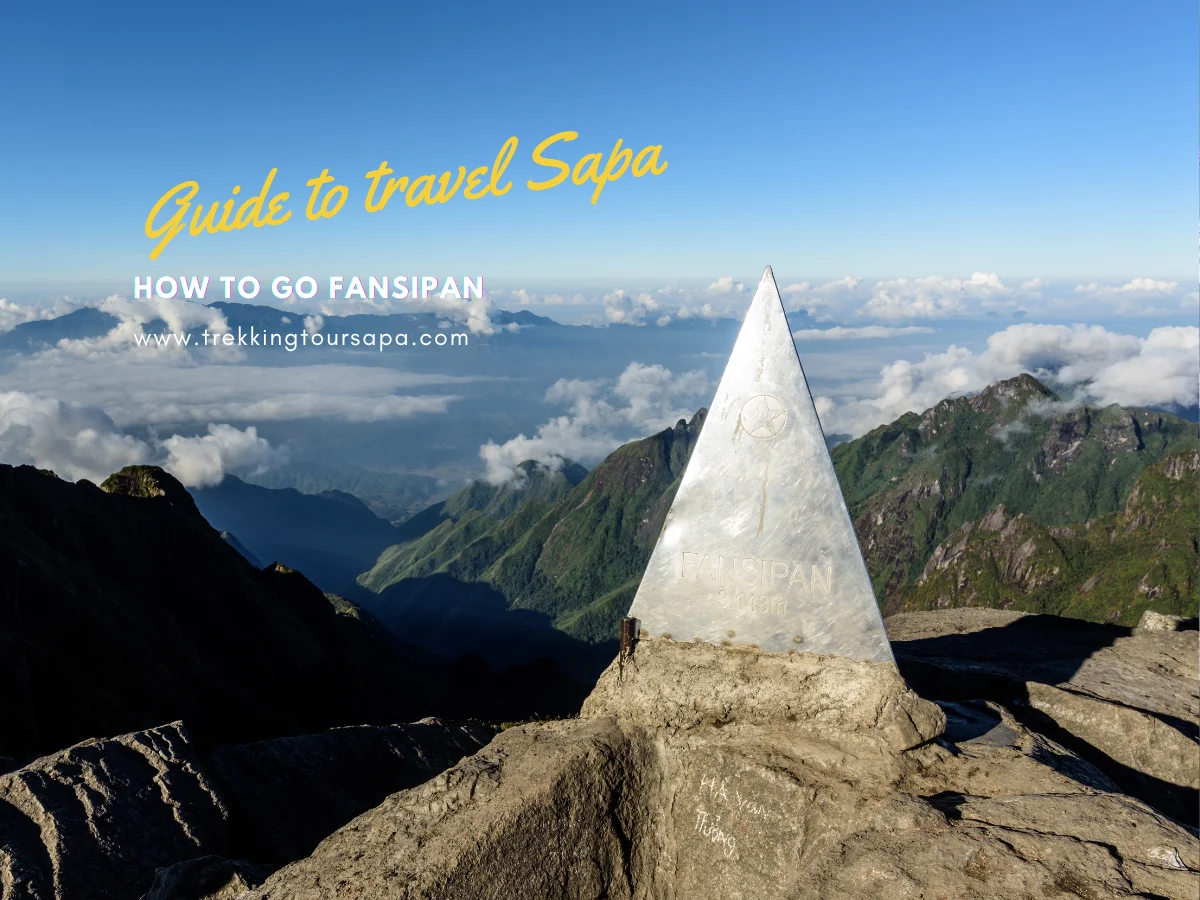As we set our sights on the majestic Fansipan, the question arises: Is it possible for us, without the extensive mountaineering expertise under our belt, to master the art of ascent and stand atop the “Roof of Indochina”? Our ultimate guide to conquer Fansipan is meticulously crafted to provide you with the necessary insights and preparations required for this thrilling journey. Ascending Fansipan is now more accessible than ever, but it still demands respect and careful planning; let us navigate you through the essentials needed to reach the summit and enjoy the view from Vietnam’s highest point.
How To Go Fansipan Key Takeaways
- Understanding the accessibility of Fansipan for climbers of varying experience levels.
- Familiarizing with key preparations for a successful Fansipan summit attempt.
- Insights on the cultural and spiritual facets enriching the Fansipan ascent.
- Awareness of weather considerations and seasonal best practices for climbing Fansipan.
- Knowledge of safety steps and the rewards of conquering the region’s highest peak.
Table of Contents
ToggleWelcome to the Rooftop of Indochina
Standing tall as the emblematic point of natural harmony and cultural reverence, Fansipan lovingly holds the title of the Rooftop of Indochina. This peak is not merely a summit; it is a sanctuary where earth touches the sky, offering a unique junction for enthusiasts seeking not just an adventurous climb, but also spiritual solace. The wide expanse from this towering pinnacle provides a rare opportunity to gaze upon the silhouettes of Vietnam, Laos, and Cambodia, a trifecta of cultural and geographic majesty unfolding beneath the gaze of awe-struck climbers on a clear day.
The intertwining of culture with the natural landscape is evident in the meticulous craftsmanship of the temple complex that adorns the peak—a symbol of the harmony between human expressions of faith and the untamed beauty of the mountain’s environs. As we follow the guidance of an expert Fansipan mountain guide, we don’t just navigate through the trails, but through the rich tapestry of stories and traditions that cling to the very rocks and mists of this majestic mountain.
Our expedition is graced with picturesque landscapes which frame our journey to the summit, ensuring that we are lost in the wonder of each moment—be it the delicate frost on verdant leaves or the majestic sunrise piercing through the ocean of clouds.
We invite you to join us as we tread lightly on these ancient paths, where every step is a narrative, every breath a closer affinity with the land, and the summit—a meeting place of earth, sky, and spirit.
How to Go Fansipan: Planning Your Journey
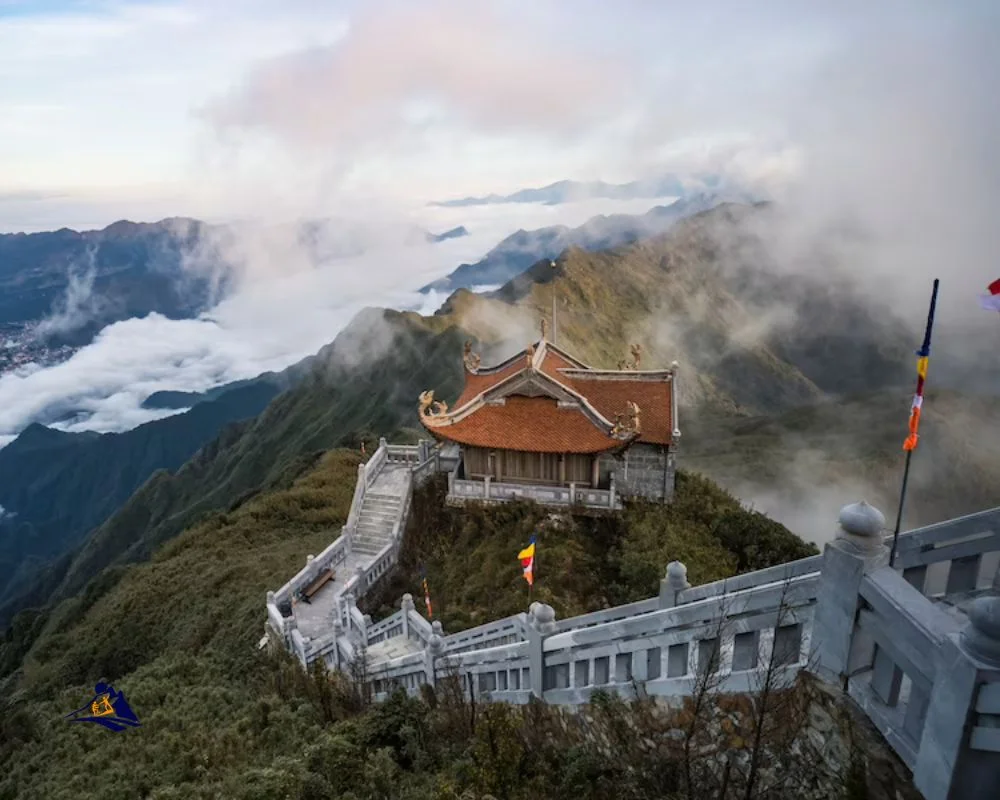
Embarking on a journey to the summit of Fansipan can be the adventure of a lifetime. Yet, successful ascent requires careful planning and consideration, especially when it comes to choosing the right time to visit and navigating the best route to the mountain’s base. Let’s delve into the essential aspects of preparing your trek to the “Roof of Indochina” with valuable Fansipan trekking tips.
Choosing the Right Season for Your Trek
The season you choose can make a significant impact on your trekking experience. Here’s a snapshot of what each season in Fansipan has to offer:
- Spring (March-May): With flowers blooming and a verdant landscape, spring delivers pleasant temperatures for an enjoyable trek.
- Summer (June-August): Expect warmer weather and some rain which can make the trails slippery, adding to the challenge.
- Autumn (September-November): Arguably the best time to trek with clear skies, mild weather, and terraced fields turning golden with the season.
- Winter (December-February): Brace yourself for cold temperatures and the occasional snowfall, a rarity and a treat in these latitudes.
Our Fansipan hiking essentials for the season include waterproof gear for the summer rains, warm layers for the cool winters, and dependable trekking poles to navigate veritable paths. Timing your trek during the dry seasons will most likely give you the safest conditions for hiking.
Traveling to Sapa: Gateway to Fansipan
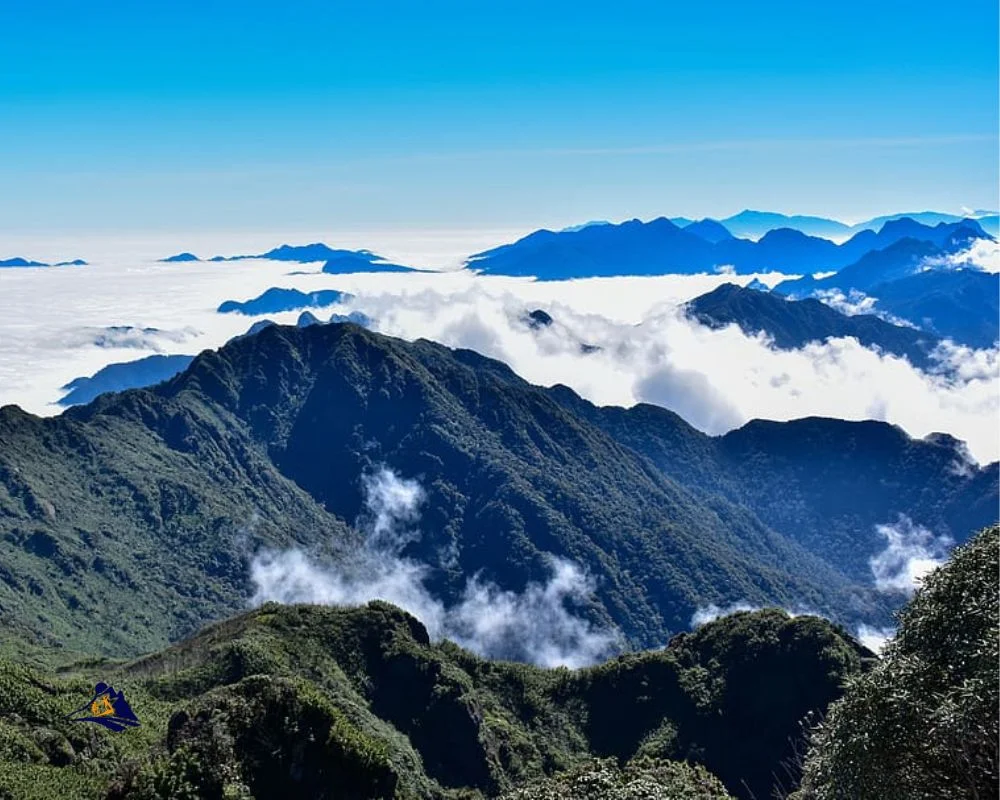
Reaching Sapa, the starting point for your Fansipan adventure, is a journey in itself. Travelling from Hanoi by train is a popular choice, offering a blend of comfort and scenic beauty:
| Type of Train | Duration | Experience |
|---|---|---|
| Overnight sleeper | Approx. 8 hours | A restful journey letting you wake up refreshed in Sapa. |
| Day train | Approx. 6 hours | Enjoy captivating views of the Vietnamese countryside in daylight. |
Once in Sapa, you’ll find various amenities to prepare for your trek. It’s where you can stock up on any last-minute Fansipan hiking essentials, familiarize yourself with the best routes to Fansipan, and adapt to the higher altitude at a leisurely pace.
By now, we hope you have a solid understanding of how to go Fansipan, maximizing your trekking experience with the correct timing and transportation choice. Stay tuned as we continue to share more Fansipan trekking tips, ensuring your journey to the pinnacle is as memorable and rewarding as can be.
Understanding the Trails: Selecting Your Path
Embark on a thrilling Fansipan trekking experience with us as we guide you through the meandering paths that lead to the majestic Fansipan summit. With multiple trails to choose from, selecting the right one can make a significant difference in your overall journey to the peak. Let’s explore the most popular and alternative routes to ensure your Fansipan summit trek is memorable for all the right reasons.
The Tram Ton Pass Trail: A Popular Choice

The Tram Ton Pass Trail, affectionately known to locals as the “Love Waterfall” path, is renowned for its accessibility and safety, making it an ideal choice for independent climbers and structured Fansipan hiking tours. Stretching over 11.2km, this trail can take you to the summit in 6 to 9 hours, depending on your pace and physical condition. The journey offers not only a physical challenge but also a feast for the senses with its rich, natural tapestry.
Alternative Routes: Sin Chai and Cat Cat Trails
If you’re seeking more seclusion and a test of your mettle, the Sin Chai trail presents an invigorating challenge with its rugged terrain. Alternatively, the Cat Cat trail offers an easier yet equally rewarding ascend. Each path presents its own challenges and beauty, catering to the various desires of trekkers.
| Trail Name | Distance | Approximate Time | Terrain Type | Suitability |
|---|---|---|---|---|
| Tram Ton Pass | 11.2 km | 6-9 hours | Moderate, well-marked | Beginner to Intermediate |
| Sin Chai | 8 km | 7-10 hours | Rugged, steep inclines | Intermediate to Advanced |
| Cat Cat | 12 km | 6-8 hours | Gentle slopes, scenic | Beginner to Intermediate |
We hope this comparison sparks your adventurous spirit and helps you choose the ideal Fansipan trekking experience. Your journey to the roof of Indochina begins with the first step on the right trail!
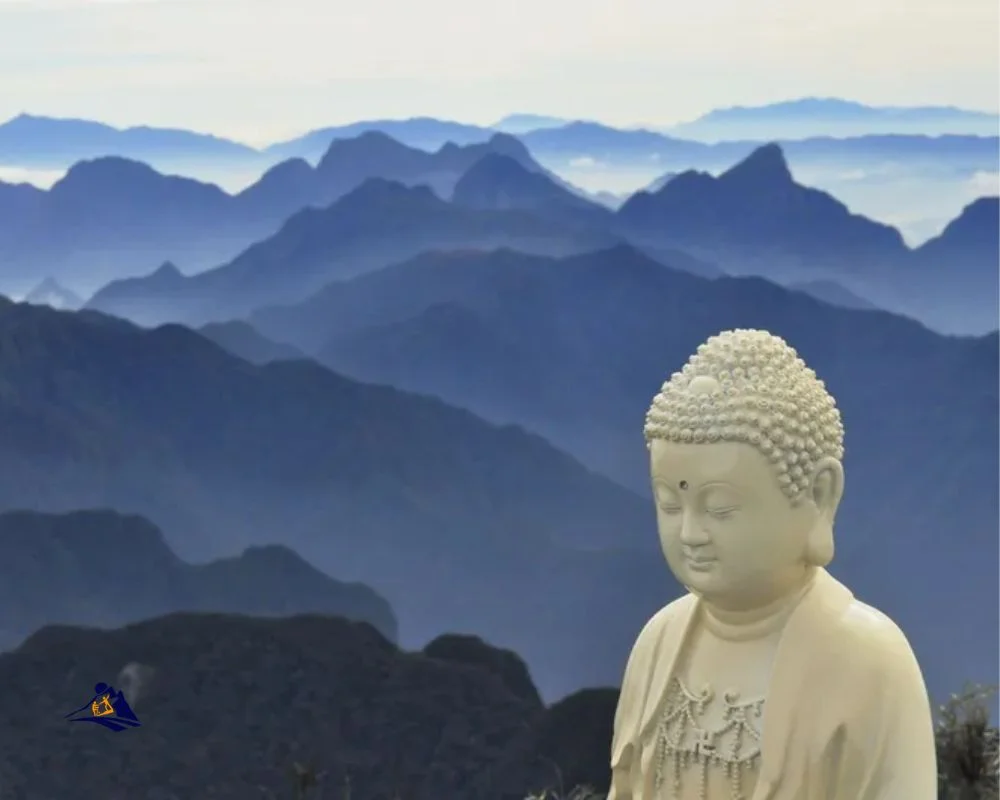
Fitness and Preparation: Training for the Climb
Embarking on the journey to the summit of Fansipan, one must be mindful of the trek’s difficulty, and accordingly, preparing for the Fansipan hike becomes as important as the journey itself. Our preparation process encompasses not only the fortification of our physical condition but also ensuring our safety through careful planning and training. It’s crucial to acknowledge that the elevations and rigors we’ll encounter on Fansipan demand a specialized fitness regimen.
Remember, the key to conquering Fansipan lies not just in our dreams but also in the strength of our legs and the will of our hearts.
To ensure we are adequately prepared for the trek difficulty, here’s a fitness table that we’ve crafted, designed to optimize our physical performance for what lies ahead:
| Weeks to Summit | Cardiovascular Training | Strength Training | Altitude Preparation |
|---|---|---|---|
| 8-10 Weeks Prior | Running or cycling, 3 times per week | Squats and lunges, twice per week | High-altitude hiking or sleeping (if possible) |
| 6-8 Weeks Prior | Increase to 4 times, include interval training | Core strength exercises added | Intermittent hypoxic training, if accessible |
| 4-6 Weeks Prior | Brisk hill walking added | Deadlifts for leg and back strength | Consistent hiking at altitude |
| 2-4 Weeks Prior | Long distance runs or uphill endurance cycling | Weight lifting including upper body | Hiking with weighted pack for adaptation |
| 1-2 Weeks Prior | Taper intensity, focus on steady-state activities | Maintain muscles with light, focused exercise | Rest and acclimatize at moderate altitude |
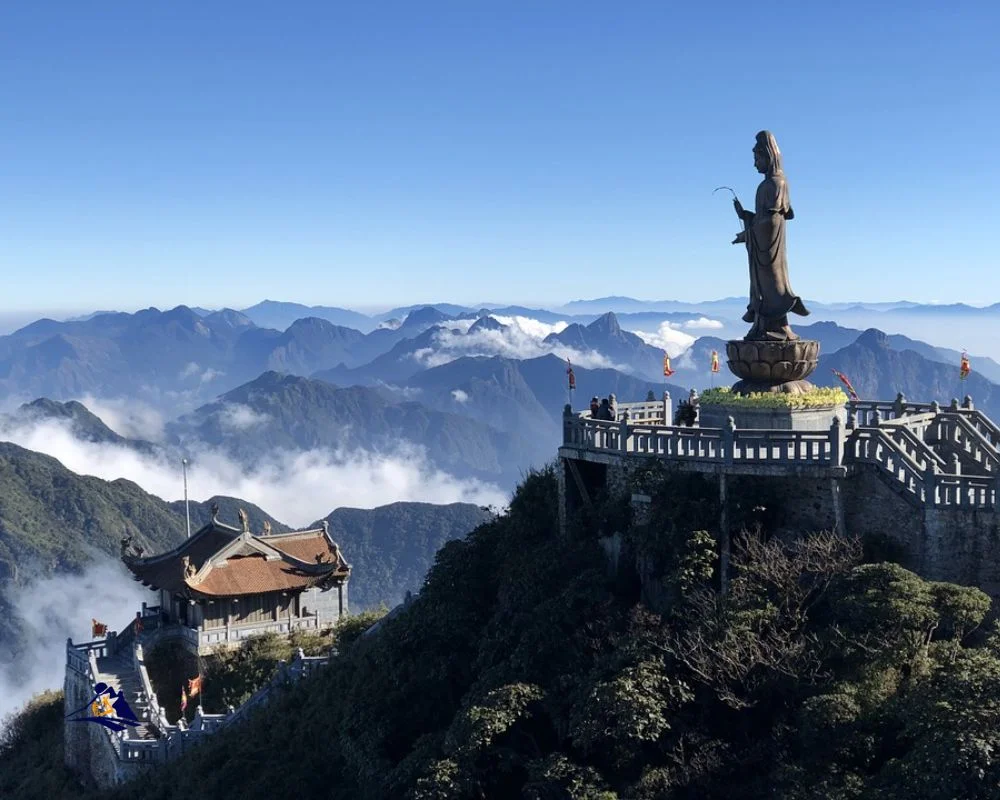
While this fitness schedule offers a structured approach to preparing for the Fansipan hike, listening to our body is paramount; we should adjust the intensity and frequency of our workouts accordingly. Besides the physical preparation, we must ensure that we have the right gear and knowledge to handle the potential breathing difficulties and rugged terrain we’ll face.
We must not underestimate the Fansipan trek difficulty—thorough preparation is our pathway to the summit. Let’s march towards Fansipan with confidence in our stride and determination in our spirits, for the mountain awaits us with open skies and untold stories to reveal.
Packing Essentials: Fansipan Hiking Gear Guide
Embarking on a journey to conquer Fansipan requires not only determination but also the right equipment. We’ve compiled a comprehensive Fansipan gear guide to help ensure that you’re well-prepared for your adventure. From the indispensable clothing choices to the food and water you’ll carry, every item plays a pivotal role in your trek’s success.
Dressing for the Altitude: Layering Tips
To address the often unpredictable mountain weather, our Fansipan hiking essentials list emphasizes the importance of layering. We suggest starting with a moisture-wicking base layer to keep you dry, an insulating layer such as fleece to retain body heat, and a waterproof and windproof outer shell to protect against the elements. Don’t forget to protect your extremities with a hat, gloves, and thermal socks.
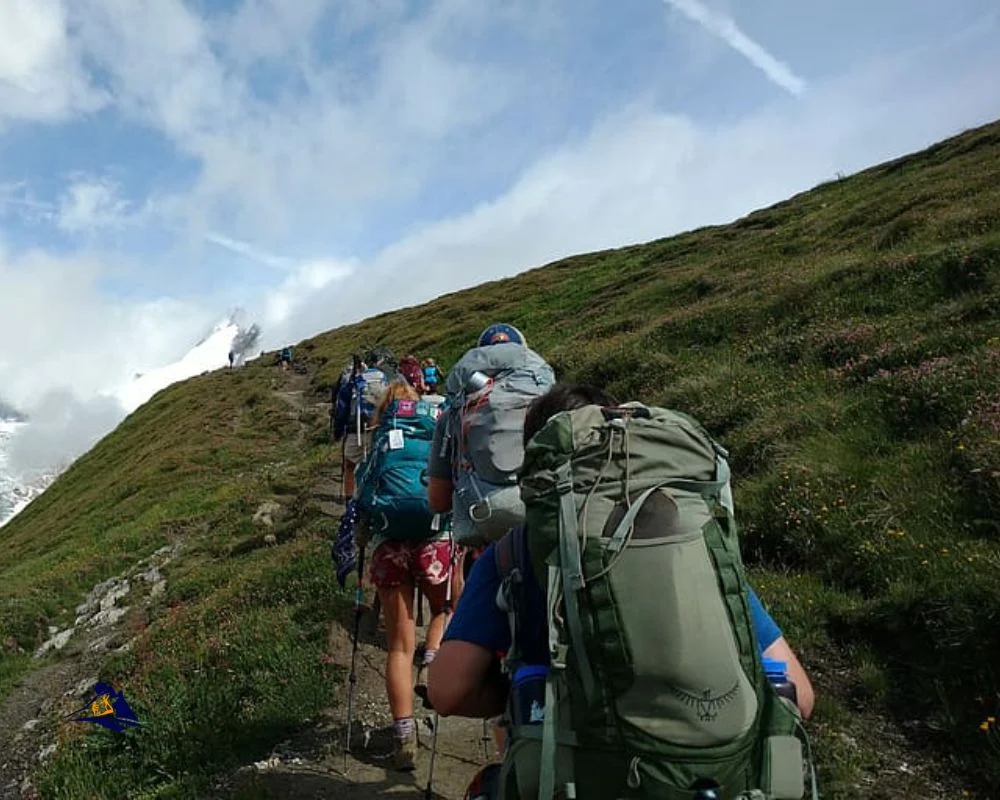
Provisions and Hydration: Staying Fueled and Hydrated
Staying nourished and hydrated is crucial to maintaining your stamina throughout the climb. Our gear guide recommends carrying energy-dense foods like nuts, dried fruit, and granola bars. Equally important is to ensure you have at least three liters of water with you to avoid dehydration. A lightweight and portable water purifier can also be beneficial when refilling from natural water sources.
In summary, perfect preparation leads to peak performance. As you finalize your packing list, refer to this Fansipan gear guide and ensure you’ve covered all bases for a safe and enjoyable trek up the majestic Fansipan mountain.
Sapa 1 Day Tours
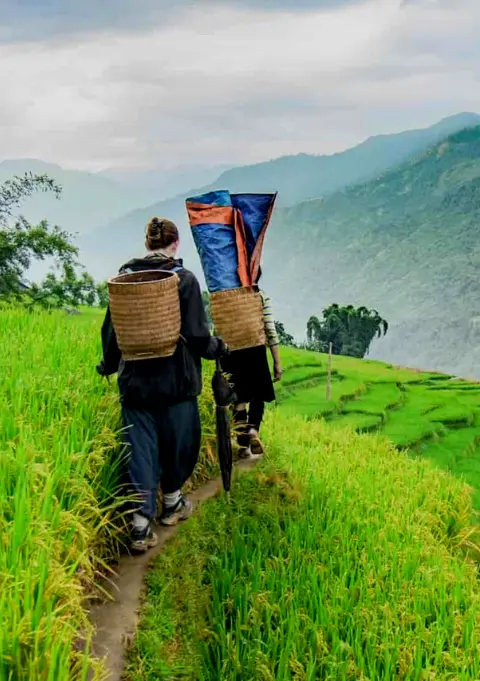
- 1 day experience
- Moderate to challenging
- Cultural immersion & active adventure
- Rice fields, valleys & villages
- Private tours
- Vegan-friendly
Sapa 2 Day Tours
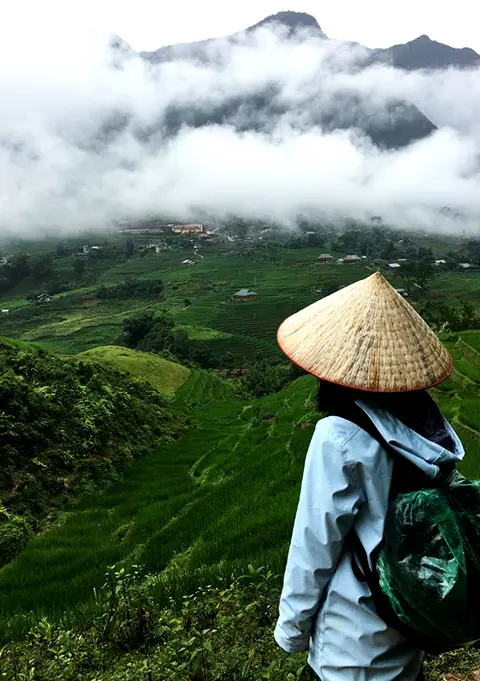
- 2 days 1 night experience
- Moderate to challenging
- Cultural immersion & active adventure
- Mountains, valleys, rice fields and villages
- Private tours
- Vegan-friendly
Sapa 3 Day Tours
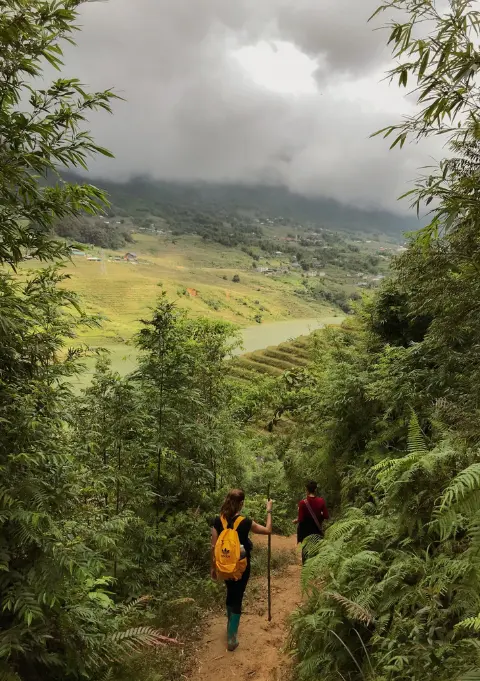
- 3 days 2 night experience
- Moderate to challenging
- Cultural immersion & active adventure
- Mountains, valley, rice fields & villages
- Private tours
- Vegan-friendly
Sapa 4 Day Tours
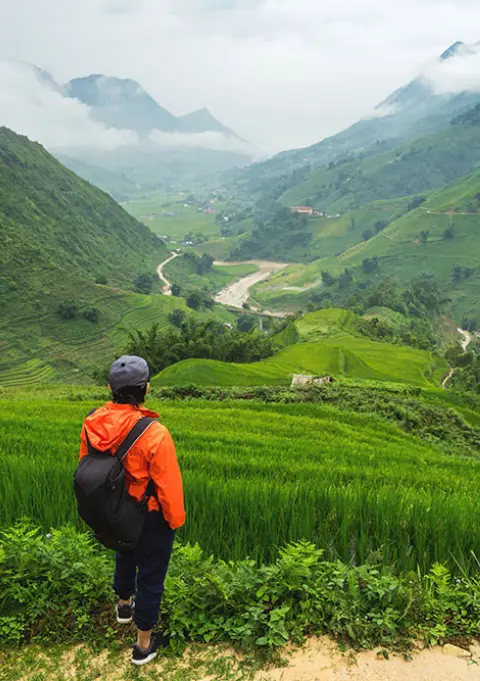
- 4 days 3 night experience
- Moderate to challenging
- Cultural immersion & active adventure
- Mountains, valleys, rice fields & villages
- Private tours – Less Touristic
- Vegan-friendly
Navigating Local Regulations: Permits and Permissions
Embarking on the journey to ascend Fansipan, it’s crucial for us to be well-informed about the Fansipan permit requirements and Fansipan regulations. Our adventure experience must align with local guidelines to ensure both a legal and safe climb.
Although no specialized mountaineering permit is required, there are still key practices all climbers should be aware of. To prevent any inconveniences or penalties, let’s delve into the current regulatory landscape as it pertains to our anticipated climb.
- Permit Checks: Always verify the latest park regulations before setting out. While the intricacy of the rules can fluctuate, it’s essential to have up-to-date information.
- Registration: Certain park zones may necessitate registering our presence. This is often a straightforward process but non-negotiable in keeping with park guidelines.
- Guide Requirements: Even though hiring a guide isn’t a strict obligation for seasoned hikers, we should consider the potential risks of trekking unguided, including the possibility of fines from park rangers.
- Environmental Care: Respecting the pristine nature of Fansipan, follow ‘Leave No Trace’ principles to ensure our environmental footprint is as minimal as possible.
Our trek isn’t just a physical challenge—it’s about respecting the environment and complying with local protocols for a truly memorable and responsible ascent of Fansipan.
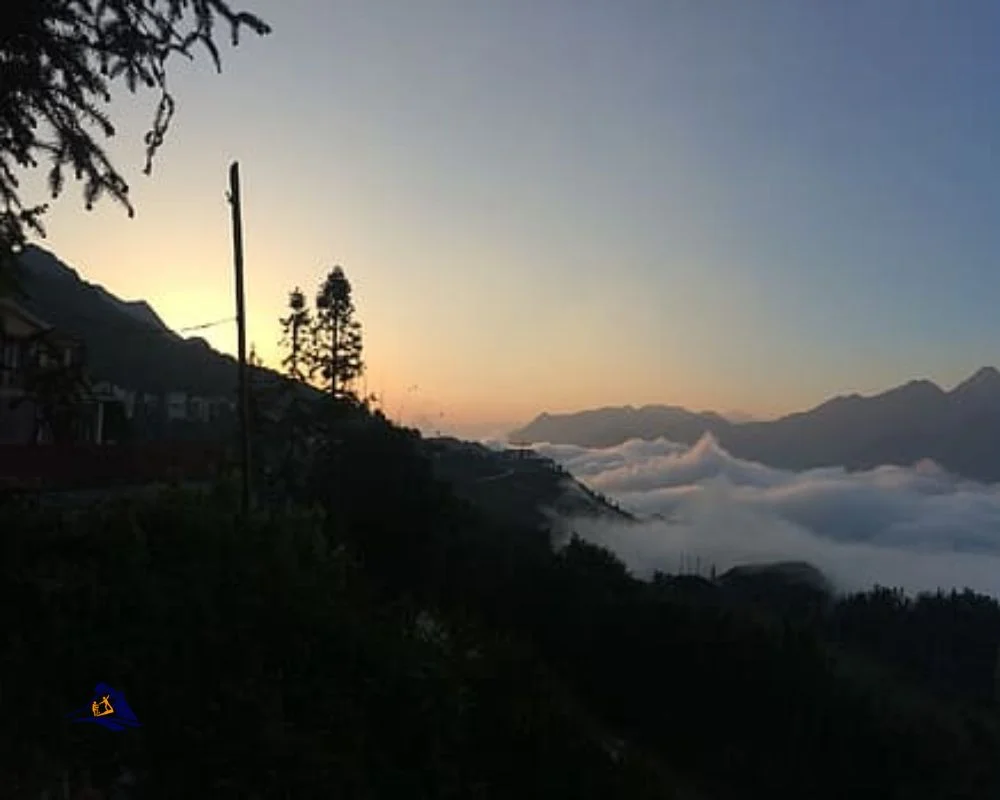
Cultural Insights: Engaging with Local Communities
As we begin our journey from the vibrant town of Sapa, our gateway to conquering Fansipan, it’s essential to immerse ourselves in the rich tapestry of cultural interactions that await. The **Fansipan cultural engagement** doesn’t merely start and end with the climb; it is woven through the fabric of local life, particularly evident in the bustling **Sapa markets**.
The Markets of Sapa: A Cultural Introduction
Visiting Sapa’s markets is like stepping into a kaleidoscope of color, sound, and aroma. Here, we find ourselves guests in a world where each market stall tells a story of tradition and craftsmanship. The air is filled with the chatter of Hmong, Dao, and Giay vendors, each showcasing an array of textiles and handcrafted local products that reflect their heritage. These markets serve as a crossroad of cultures and an open-air gallery of indigenous artistry.
Respecting the Environment and Local Traditions
Engaging with the community means more than making purchases. It is about exchanging smiles, attempting to speak a few words in the local dialect, and showing respect for the profound connection the people here have with their land. We are reminded, amid our interactions, to consciously preserve the environmental sanctity and honor the age-old customs that make this region uniquely captivating.
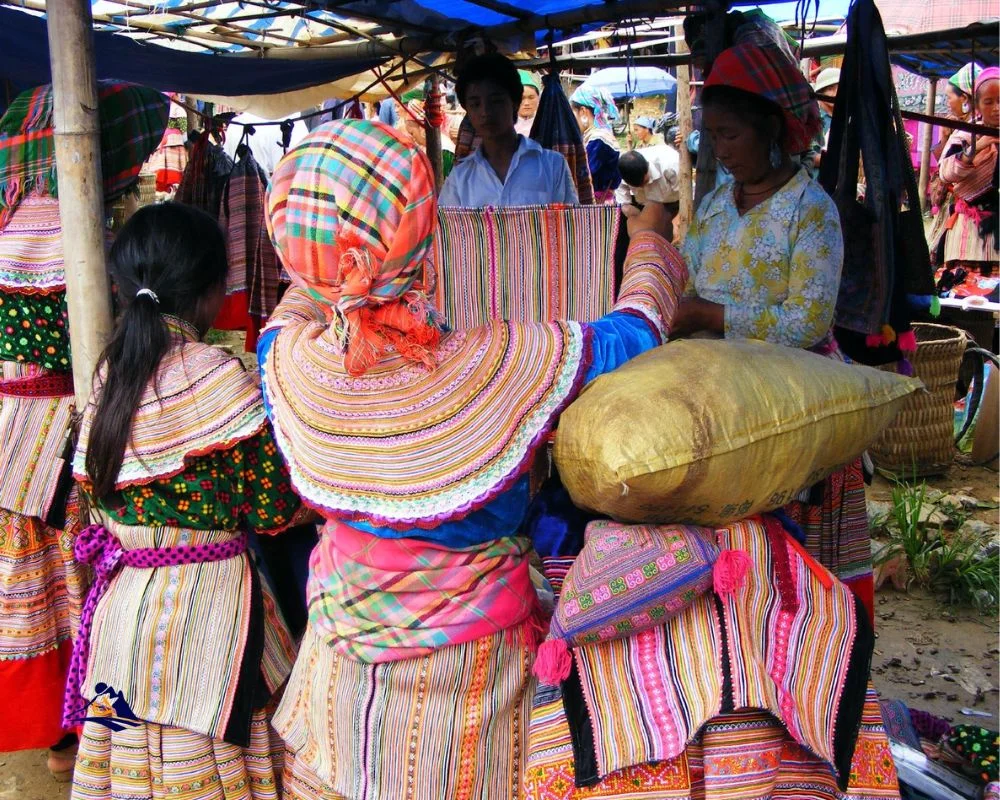
| Market Name | Featured Items | Ethnic Groups | Market Days |
|---|---|---|---|
| Bac Ha Market | Textiles, silver jewelry, local produce | Hmong, Phu La, Black Dao | Sunday |
| Can Cau Market | Handwoven blankets, clothing | Flower Hmong, Nung | Saturday |
| Coc Ly Market | Basketry, rice wine, livestock | Tay, Dzay, Flower Hmong | Tuesday |
Our cultural engagement enriches our trekking journey with connections that resonate beyond the physical boundaries. Indeed, these markets in Sapa provide a memorable preamble to the exalted hike we are about to undertake. With each step towards Fansipan’s summit, we carry with us the spirit of local traditions and a profound appreciation for the communities that are an intrinsic part of this landscape.
Setting Out: Your First Steps Towards the Summit
Embarking on the beginning Fansipan trek is an exhilarating moment, filled with anticipation and excitement. Every journey up this magnificent mountain starts with a single step, but it’s how we manage those steps that shapes our experience. As we set out on the well-trodden paths leading to Phan Xi Păng’s peak, let’s take a moment to understand what lies ahead in the initial stretch of our ascent.
The Initial Ascent: What to Expect
As the gradient gently rises beneath our feet, the trail invites us to begin at a moderate incline. Here, the path is clear—marked by the footsteps of those seekers of summit glory who’ve come before us. It’s a blend of natural beauty and manual endurance, promising adventures as we breathe in the crisp mountain air and witness the changing landscapes. We find ourselves surrounded by an unfolding tapestry of green as our journey to the clouds commences.
Sapa 1 Day Tours

- 1 day experience
- Moderate to challenging
- Cultural immersion & active adventure
- Rice fields, valleys & villages
- Private tours
- Vegan-friendly
Sapa 2 Day Tours

- 2 days 1 night experience
- Moderate to challenging
- Cultural immersion & active adventure
- Mountains, valleys, rice fields and villages
- Private tours
- Vegan-friendly
Sapa 3 Day Tours

- 3 days 2 night experience
- Moderate to challenging
- Cultural immersion & active adventure
- Mountains, valley, rice fields & villages
- Private tours
- Vegan-friendly
Sapa 4 Day Tours

- 4 days 3 night experience
- Moderate to challenging
- Cultural immersion & active adventure
- Mountains, valleys, rice fields & villages
- Private tours – Less Touristic
- Vegan-friendly
Maintaining Stamina: Pacing and Resting Strategies
In the alpine conquest of Fansipan, maintaining stamina on Fansipan becomes our mantra. It’s about embracing the rhythm of our breaths and steps, orchestrating them in harmony with the mountain’s heartbeat. Wise trekkers know the power of pacing, understanding that the journey is a marathon, not a sprint. Regular breaks become our trusted companions, as we pause to replenish our energy with water, nutritious snacks, and rest—each a pivotal moment to celebrate our progress and prepare for the steeper challenges that await.
Yes, it is these initial strides that underpin the symbiosis between trekker and trail. Our forward momentum, constantly adjusted to the mountain’s ebb and flow, is a dance that takes us higher. And as we ascend, it is the careful balance of exertion and relaxation—the art of pacing—that will ensure our steps are not just strides toward the summit, but also towards self-discovery.
The Summit Trek: Reaching the Roof of Indochina
As we approach the highest point of our journey, the true essence of reaching Fansipan summit becomes clear. The title ‘Roof of Indochina’ isn’t granted lightly; it’s a reward for those who persevere through the toughest stretches of the mountain. The final hours of our ascent are a test of will as we face an intricate dance of steep climbs followed by abrupt descents, a rhythm that challenges both our physical and mental endurance.
Amidst the rugged beauty, we encounter narrow rocky paths that demand our full attention, and precarious ladders that lead us closer to our goal, each rung a step towards triumph. The air grows thinner as we climb, a subtle reminder that we are entering a domain where every breath and every movement counts. It’s on these slopes that we transform, not just as climbers, but as individuals seeking the essence of a true Roof of Indochina adventure.
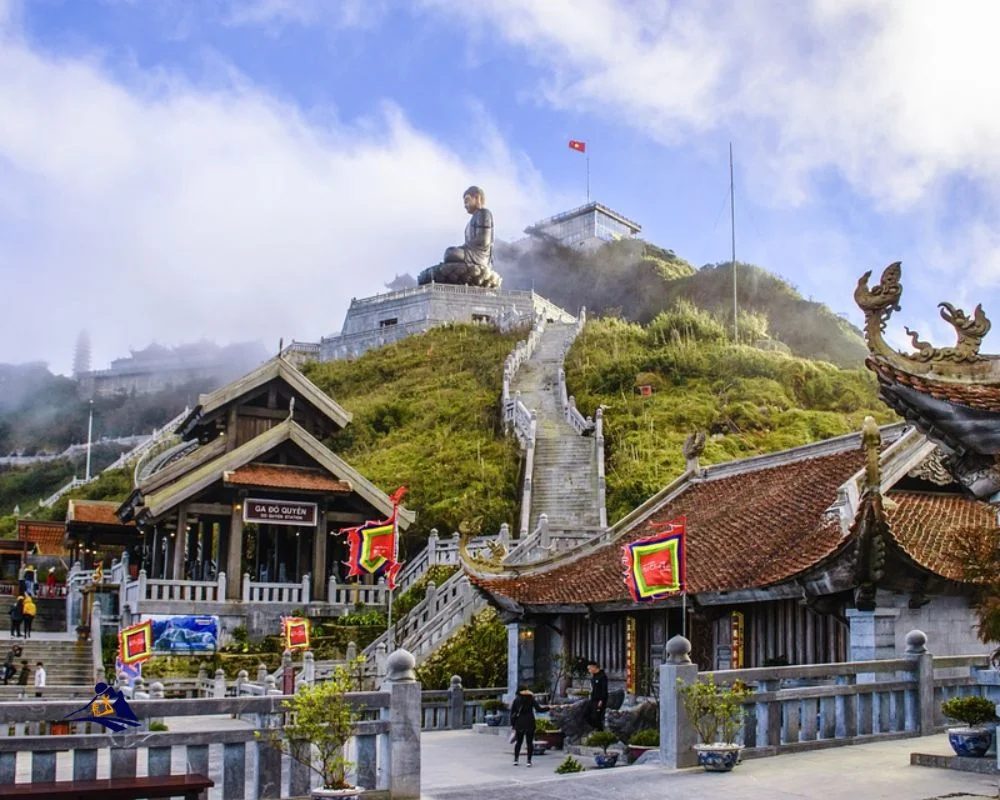
In the ultimate hours, when our limbs cry for respite and our lungs clamor for air, we understand that this summit trek goes beyond sheer muscle strength; it’s a conquest of spirit, a testament to the resilience that dwells within us all.
- Climbing steep ascents and navigating the intricate paths
- Encountering ladder sections that represent the literal and metaphorical steps to success
- Pushing through the mental and physical barriers as the altitude increases
- Savoring the achievement of reaching the summit, a moment where effort and elation collide
The culmination of our climb isn’t merely a geographical point; it’s a journey peppered with moments that ask us to reach deep within and find a strength unknown. The Roof of Indochina awaits, not just as a destination, but as a transcendent experience that will resonate long after our descent.
Dealing with Challenges: Weather and Terrain
As we brave our ascent to the magnificent Fansipan summit, we are often reminded that nature holds the trump card. The unpredictability of Fansipan weather conditions can turn a clear morning into an afternoon shrouded in fog or unleash a sudden rainstorm that makes the pathways slippery and treacherous. These abrupt changes are not just tests of our endurance but are crucial for us to consider for our overall safety.
Our excursions are further tested by mountain terrain challenges that come with the rugged beauty of Fansipan. Our path winds through steep and uneven trails where every step must be measured and deliberate. It’s more than a trek; it’s a dance with the earth itself, where missteps are not an option.
| Weather Condition | Challenges | Preparation Tips |
|---|---|---|
| Sudden temperature drop | Risk of hypothermia | Wear layers and carry thermal gear |
| Fog | Decreased visibility | Carry a map and compass, use GPS |
| Rain | Slippery paths, increased risk of injury | Waterproof gear and slip-resistant shoes |
| Snow | Cold exposure, obscured trails | Essential winter gear and guided support |
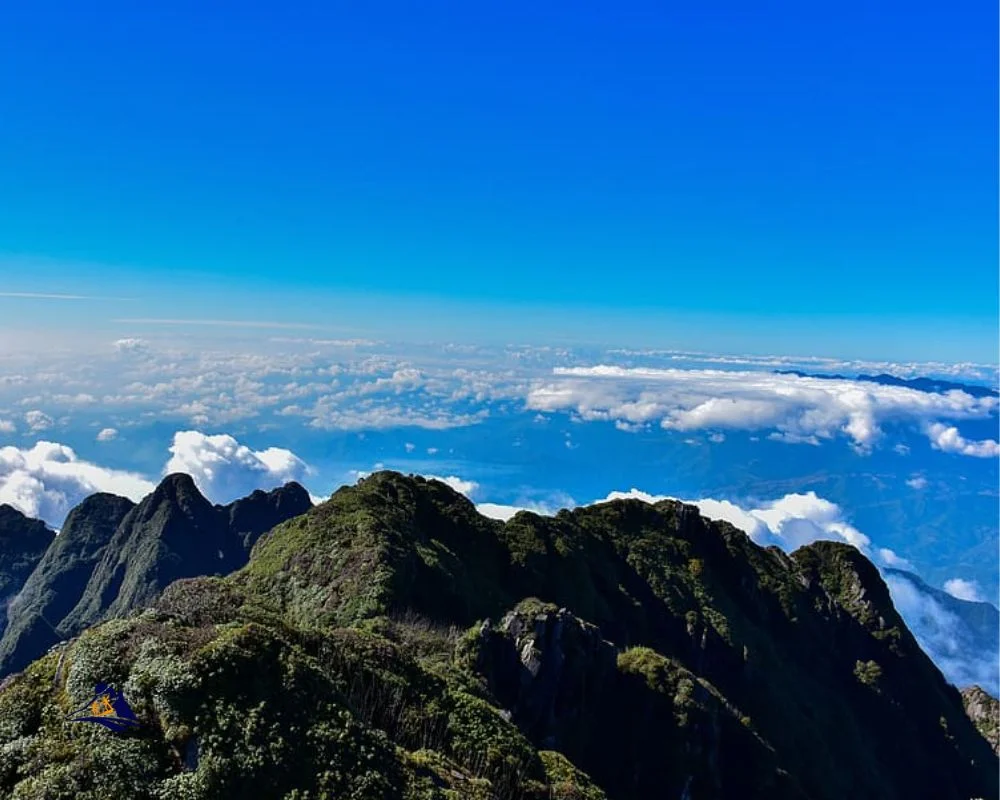
Informing ourselves of the latest Fansipan weather conditions is as essential as our physical preparations. A keen eye on the forecast will help us dress, pack, and plan accordingly. Acknowledging and respecting the inherent mountain terrain challenges enriches our experience, teaching us the virtues of humility and preparation before nature’s immense power.
The Final Push: Conquering Fansipan’s Peak
As we reach the zenith of our adventure, conquering Fansipan’s towering peak, the moment of triumph is unparalleled. The panoramic vistas from the ‘Roof of Indochina’ beckon a sense of awe and pride. This is a chance to pause and cherish the breathtaking scenery and the fruition of our arduous journey. But let us remember, fellow trekkers, our expedition is not complete until we’ve returned safely to the base.
Savoring the Summit: Embracing the Views and Accomplishment
The beauty of the world stretches out beneath us, a tapestry of nature’s finest work visible from the crest of Fansipan. But, it is essential to capture these moments not just in our lenses, but within our hearts and memories. The sensation of victory as we stand atop Vietnam’s highest point is a feeling to hold onto for life.
Safety First: Ensuring a Successful Descent
Sapa 1 Day Tours

- 1 day experience
- Moderate to challenging
- Cultural immersion & active adventure
- Rice fields, valleys & villages
- Private tours
- Vegan-friendly
Sapa 2 Day Tours

- 2 days 1 night experience
- Moderate to challenging
- Cultural immersion & active adventure
- Mountains, valleys, rice fields and villages
- Private tours
- Vegan-friendly
Sapa 3 Day Tours

- 3 days 2 night experience
- Moderate to challenging
- Cultural immersion & active adventure
- Mountains, valley, rice fields & villages
- Private tours
- Vegan-friendly
Sapa 4 Day Tours

- 4 days 3 night experience
- Moderate to challenging
- Cultural immersion & active adventure
- Mountains, valleys, rice fields & villages
- Private tours – Less Touristic
- Vegan-friendly
Mindfulness and careful steps are our mantras for the descent. The trail downwards, potentially slick with rain or clouded by mist, demands our full attention. Here are some safe descent tips to ensure we make it back as champions:
- Pace yourself – Ascending may be the challenge, but a hasty descent can be the error. Monitor your pace and take it steadily.
- Hydration is key – Conquered the climb? Now conquer thirst. Keep your water supply close and your mind clearer.
- Check the weather – As we know, Fansipan’s climate is capricious. Stay ahead with timely weather checks.
- Monitor your health – Altitude can play tricks even on descent. Keep a close eye on any signs of distress.
Our journey to Fansipan’s summit may be replete with challenges, but with camaraderie, careful planning, and sagacious decisions, we can guarantee stories to impart and experiences to inspire. Here’s to all of us, scaling heights and creating memories!
Recovery and Reflection: Post-Trek Relaxation
Our ascent to the Fansipan summit was not merely a test of physical endurance but also a profound journey into the self. Now that we’ve conquered the peak, the quest for post-trek recovery begins. It is a time to pause, rejuvenate, and engage in introspection—an integral part of our Fansipan experience reflection.
We understand the importance of allowing our bodies to recuperate after such strenuous activity. Sapa, with its calming ambience, presents an ideal backdrop for our recovery. Here, we dive into the depth of relaxation by exploring the local cuisine, characterized by fresh, restorative ingredients that seem to echo our need for replenishment.
While resting, we partake in an essential phase of post-trek recovery — reflection. This mountain, with its grandeur and rugged slopes, has bestowed upon us life-long memories and lessons. We find solace in recounting each step that led us to the towering summit and every moment of camaraderie that took us through the trials of the trek. The town’s vibrant marketplace serves not just as an avenue for physical relaxation but a tapestry of the local culture that deepens our reflection.
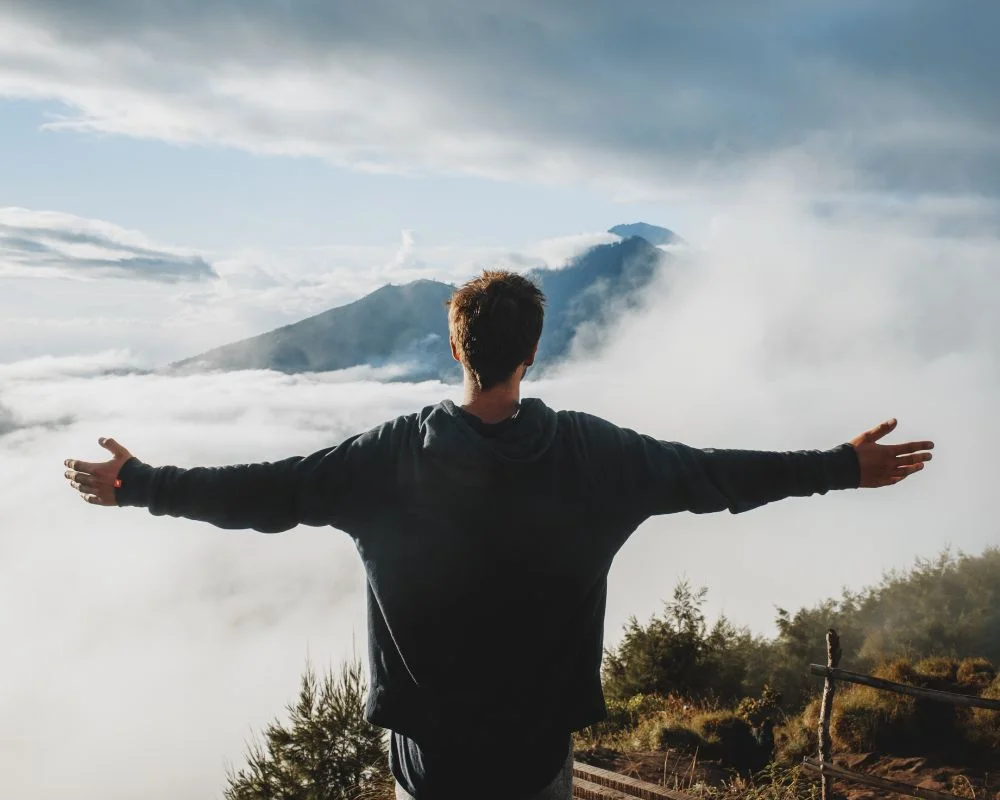
As we unwind, we realize that the Fansipan journey was more than a climb; it was a narrative of personal ascent, a story where each one of us emerged not just stronger, but wiser and more connected to our inner selves and the environment.
Acknowledging that recovery is multifaceted, we spend time in Sapa’s serene environs, which facilitates both physical recuperation and mental peace, cementing the Fansipan experience into our collective memory. Every step on the trail, every breath of mountain air, and each silent moment amidst the clouds come together, forming a mosaic of recollections we treasure. For now, we allow ourselves to bask in the soft afterglow of our achievement, knowing that the essence of Fansipan will forever be part of us.
Preserving Memories: Capturing Fansipan’s Majesty
For us trekking enthusiasts, the climb to Fansipan’s peak is an epic saga of human endurance and nature’s wonders. But what lasts longer than the physical conquest are the vivid memories that we preserve.
Capturing Fansipan moments is not just about taking pictures; it’s an art of holding onto the feelings and experiences that may otherwise fade away. Photography stands as a witness to the breathtaking biodiversity and the architectural grace of mountaintop temples. These images serve as tangible tokens to preserve trek memories and share our story with the world.
Even as we leave the majestic heights of Fansipan behind, we have a variety of ways to document our journey. Here’s how we can keep those memories alive:
- Photographing majestic vistas and quiet nooks alike to revisit the journey’s visual tapestry.
- Keeping a daily journal to document the introspective moments and personal milestones.
- Collecting souvenirs that echo the spirit of local culture and the personal triumph of the climb.
- Creating a video diary to capture the sounds and motions, breathing life into our recollections.
And it’s not just for our satisfaction. These accounts inspire others to embark on their own adventures, embrace the challenges, and fall in love with the great outdoors. Each story adds a new layer to the legacy of Fansipan, immortalizing our shared experiences as a community of explorers.
| Method | Benefit | Tools Needed |
|---|---|---|
| Photography | Visual storytelling | Camera or Smartphone |
| Journaling | Personal reflection | Notebook and Pen |
| Souvenir Collection | Cultural appreciation | Local Artifacts |
| Video Diary | Dynamic memory | Video Camera or Smartphone |
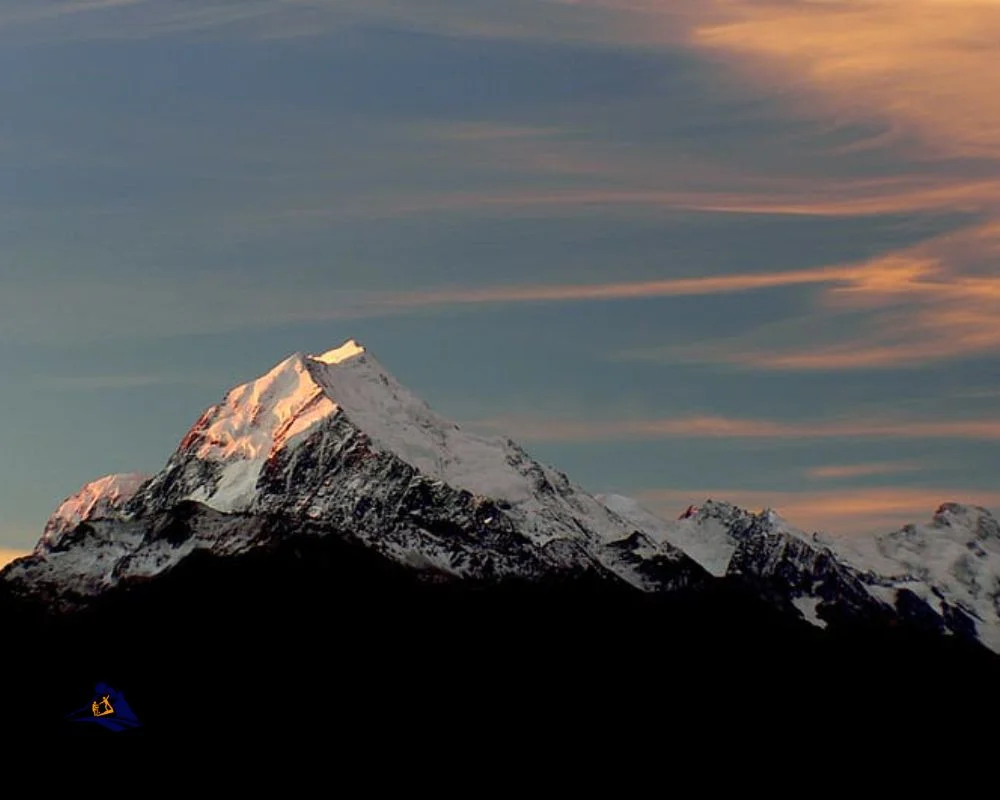
When we share our stories, we not only relive our treks but also help preserve the magic of Fansipan for future generations. Let’s take the opportunity to look back, with the mementos of our adventure in hand, and say, “We have captured the moments, and we have preserved the memories that are as monumental as the mountain itself.”
Conclusion
As we retrace our steps from the magnificent summit of Fansipan, we carry more than just the euphoria of our Fansipan trek achievement. It’s a profound culmination of endurance, culture, and personal growth, all crafted into one memorable ascent. Scaling the “Roof of Indochina” is an exploit that pushes us to the limits of our physical strengths and elevates our spirits, bonding us with the mountain and its surrounding mosaics of tradition and nature.
Our journey may have concluded, but the echoes of Fansipan, the sincere interactions with local communities, and the awe-inspiring vistas, transform into lifelong Fansipan memories that we will treasure. Each step taken on this ascent was a lesson in perseverance and adaptability—a testament to human tenacity. Fansipan is more than just a physical peak; it stands as a beacon for adventurers seeking to merge the thrill of exploration with the beauty of introspection.
Together, we have not only witnessed the grandeur of the natural world but also embraced the vibrant culture etched deeply into the tapestry of Vietnam. The memories of Fansipan, securely woven into our hearts, serve as an enduring reminder that the most rewarding paths in life challenge us to ascend beyond our limitations, to achieve something truly extraordinary.
Sapa 1 Day Tours

- 1 day experience
- Moderate to challenging
- Cultural immersion & active adventure
- Rice fields, valleys & villages
- Private tours
- Vegan-friendly
Sapa 2 Day Tours

- 2 days 1 night experience
- Moderate to challenging
- Cultural immersion & active adventure
- Mountains, valleys, rice fields and villages
- Private tours
- Vegan-friendly
Sapa 3 Day Tours

- 3 days 2 night experience
- Moderate to challenging
- Cultural immersion & active adventure
- Mountains, valley, rice fields & villages
- Private tours
- Vegan-friendly
Sapa 4 Day Tours

- 4 days 3 night experience
- Moderate to challenging
- Cultural immersion & active adventure
- Mountains, valleys, rice fields & villages
- Private tours – Less Touristic
- Vegan-friendly
